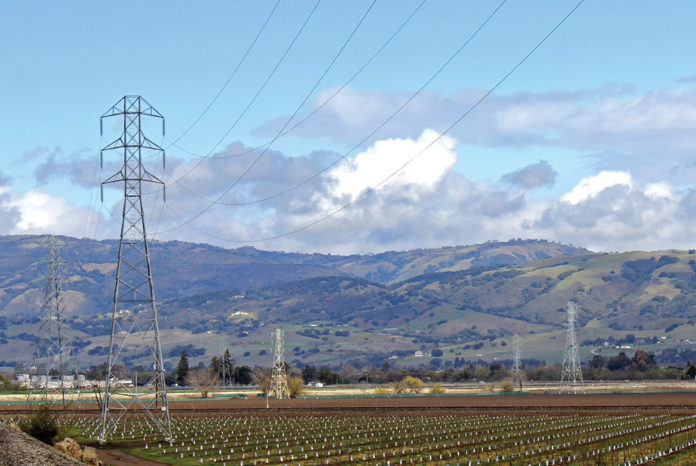
California lawmakers are crafting an end-of-session package of proposed laws that could streamline the building of solar and offshore wind energy projects, according to people familiar with the discussions.
Democratic legislators, who have shared drafts with environmental groups, industry, lobbyists and other interested parties, are negotiating the details with Gov. Gavin Newsom. The talks among staff in the state Senate and Assembly and Newsom’s office are being held behind closed doors and the proposals are not yet public. California’s legislative session ends Aug. 31.
CalMatters obtained draft copies of five energy measures that Senate President Pro Tem Mike McGuire helped draft. They aim to revamp the way the state approves and supports solar, offshore wind, battery storage and other green energy projects.
McGuire declined to discuss the proposals but he said “we’re looking forward to sharing more details in the coming days.”
“We can all agree that California has serious energy needs,” he said in a statement to CalMatters, noting brownouts, rising utility costs, increasing demand for electricity and climate change. “This is why the Senate will be embarking on a two-year effort to modernize our grid, expand the number of large-scale green energy plants and storage facilities in California, and kick a modernized permitting process into high gear.”
A spokesperson for Assembly Leader Robert Rivas, a Democrat from Salinas, did not immediately respond to requests for comment about the proposals.
Simultaneously, the Newsom administration is working on separate proposed legislation that aims to make electric bills more affordable for Californians, two sources told CalMatters. No details were immediately available and a spokesperson for the governor declined to comment.
Electric rates have nearly doubled over the last decade. The state Public Utilities Commission overhauled the rate structure with a controversial new billing system this year.
The renewable energy proposals—a package internally called the “California Made” package—seek to offer incentives for building projects and their components in California. They would create tax credits, streamline local and state permitting and change how environmental reviews are conducted for some projects.
California is facing twin challenges: Meeting renewable energy targets mandated by law, as well as dealing with some of the highest energy bills in the country.
Under state law, 60% of California electricity must be generated by clean energy sources by 2030 and 100% by 2045—a mandate critical to the state’s efforts to combat climate change.
One measure in the renewable energy package would provide a tax credit for certain renewable energy projects.
Another would grant “by right” approval to developers building in areas already zoned for them, eliminating the need for local approvals. Such proposals curtailing local control have proven controversial with city and county officials.
Under another proposal, state officials would conduct a “master” environmental review, which would serve as a comprehensive, umbrella analysis addressing large-scale issues like air emissions and cumulative impacts. Developers then would have to conduct more limited reviews of their specific projects.
Two additional proposals—one specifically for offshore wind projects and one for other renewable energy projects—would consolidate the permitting process by creating a “one stop shop” system that would consolidate applications, hearings and decision-making.
Local opposition and environmental reviews have held up large solar projects and transmission projects for years, and permitting reform was taken up earlier this year by the state Assembly Select Committee on Permitting Reform.
Steven R. Bohlen, an energy expert and senior director for government and external affairs at the Lawrence Livermore National Lab, reviewed the proposed legislation obtained by CalMatters. He said the proposals address many concerns and are “headed in the right direction.” But he added that timelines should be added.
“Though the legislative proposals create a path for streamlining, there is still no statutory requirement that each agency respond with a certain period of time, or that the overall process be limited to a certain period of time, provided all the appropriate information were submitted by the applicant,” he wrote to CalMatters in an email.
“As written, the streamlined process could still be slow, even though it is being conducted under the ‘streamlined’ process.”
Permitting reform has become a mantra for California’s newest renewable industry—floating offshore wind. The complexities of creating the new industry are enormous: creating an extensive system of ports and greatly expanding power transmission infrastructure.
Each of the five proposed projects off the coast of California will have to navigate overlapping jurisdictions and duplicative reviews with a thicket of federal, state, tribal and local agencies. The process, especially with an industry that has never operated in the state before, is slow.
Policymakers use the word “urgency” to describe efforts to expedite offshore wind power, since they are critical for meeting California’s goal to decarbonize the electricity grid.
According to the California Energy Commission, “under current federal, state, and local project review processes, the environmental and permit reviews for offshore wind facilities could take more than 10 years to complete.”
Legislators this year already are trying to tackle the rising costs of electricity.
Assemblymember Cottie Petrie-Norris, a Democrat from Irvine and chair of the Assembly standing committee on utilities and energy, amended a bill to direct state officials to “produce an affordability metric” for future electric rate increases.
Petrie-Norris told Politico in June the goal is to shave $10 off consumers’ bills. The bill passed the Assembly and was amended in the Senate, and is now undergoing more debate. A spokesperson for Petrie-Norris’ office declined to comment.
Copyright © 2024 Bay City News, Inc. This story was originally published by CalMatters at https://tinyurl.com/mr9bppp3.









